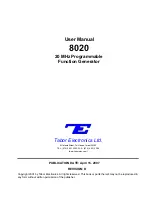
17
Section 5 |
operation
Table 5.1 lists some common loads that require high surge power on start up. A “Sizing factor” has been
recommended against each which is a Multiplication factor to be applied to the rated running Watt
rating of the load to arrive at the continuous power rating of the inverter (Multiply the running Watts of
the device / appliance by the Sizing factor).
table 5.1 Sizing of Inverter for Loads with Starting Surge
type of Device or Appliance
Sizing Factor
Air conditioner
5
refrigerator / freezer (Compressor based)
5
Air Compressor
4
Sump Pump / Well Pump / Submersible Pump
3
Dishwasher
3
Clothes Washer
3
Microwave (In cases where the rated output power is the cooking power)
2
furnace fan
3
Industrial Motor
3
Portable Kerosene / Diesel fuel Heater
3
Circular Saw
3
bench Grinder
3
Incandescent / Halogen / Quartz Lamps
3
Laser Printer / other Devices using Infrared Quartz Halogen Heaters
4
Switched Mode Power Supplies
2
Photographic Strobe / flash Lights (with respect to its Watt Sec rating)
4*
* In the case of photographic strobe / flash unit, the RMS surge power of the inverter should be more than 4 times
the Watt Sec rating of the unit.
5.6 DeteRMInInG BAtteRY SIZe
the power inverter will require DeeP cYcLe Lead Acid Batteries of appropriate capacity.
the automotive SLI (Starting/lighting/Ignition) battery is not designed for repeated deep discharges.
the SLI battery may not supply enough energy and its service life may be reduced.
To determine the minimum battery size that you will need to operate appliances, follow these steps:
1. Determine the AC wattage of each appliance and / or tool you will need to simultaneously
operate from the inverter. To do this, read the labels on the equipment to be operated. Usually,
power consumption is shown in Watts. If it is shown in Amps, multiply by 115 to determine the
AC wattage.
2. for each appliance, estimate the number of hours the appliance will be in use between
battery recharges.
3. for each appliance, determine the Watt-Hours of energy required by multiplying the AC wattage
by the number of hours of use.
4. Add the Watt-Hours of energy for each appliance to get the total Watt-Hours of energy for all
appliances to be used.
5. Divide the total Watt-Hours of energy on the AC side by 10 to get the total Ampere-Hour of energy
on the 12 VDC side to support the operation of the appliances.
6. The Ampere-Hour (Ah) capacity of the battery should be 2 times the total Ampere-Hour energy
required on the 12 VDC side to support the operation of the devices (as calculated at step 5 above).
Two times factor is necessary because batteries are normally not discharged below 50% capacity.
Содержание SSW-1000-12A
Страница 25: ...NOTES ...
















































